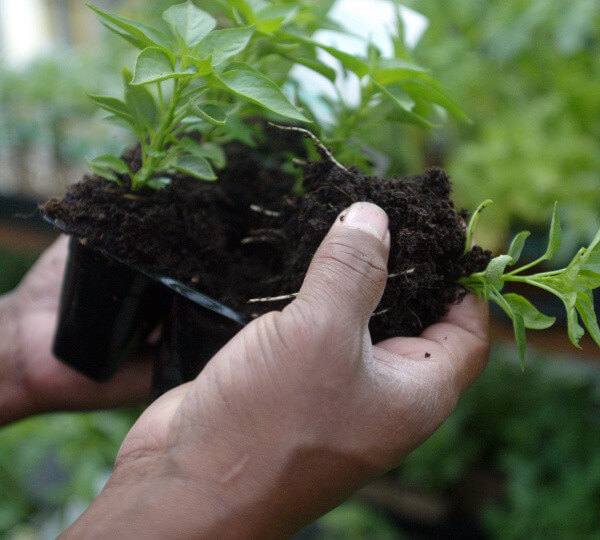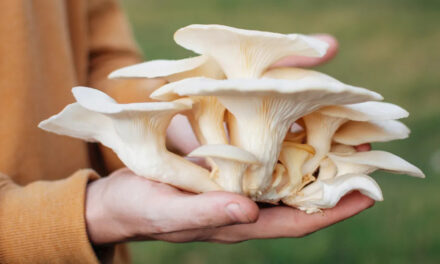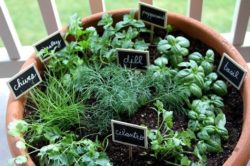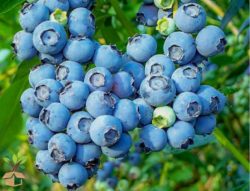When it comes to growing your own vegetable garden, there are a few things you need to know! Sure, it's fine growing your own fruits and veggies, but if you don't do it the right way, you could end up with a lot of unnecessary work and a big waste of money. Check out these 10 vegetable garden tips that will help you on your way with having THE best veggie garden ever!
10 Vegetable Garden Tips
#1. Choose Your Veggies

If you're a beginner gardener, we highly suggest easy to grow vegetables. Often times, people make the mistake of planting something which is extremely hard to grow and they get left with a bigger headache. Also, plant a small amount – don't let your garden overwhelm you!
#2. Use Your Space Efficiently

Once you've chosen your veggies, it's time to choose your space! Pick a spot that is protected from high winds, is close to a water source, and receives enough sun. For beginner gardeners, we suggest you set up raised bed or even potted edibles – this makes growing much easier, whereas direct, in the ground growing, can be quite a hassle. Again, start small, and, if you see fit, increase the size of your garden.
#3. Design and Layout

There are really only two ways to plant the layout of your garden. The first way is traditional row planting, which is the most common way. This is when you place plants single file, in rows, and with a walking path in between each row. This is best for large gardens only. The second way is called intensive cropping, which is basically just dividing a garden into smaller gardens, keeping each vegetable together, as if in a group. This method of gardening also allows you to mix different vegetables together and you'll also save a lot of space.
#4. Move the Crops

You should be moving your crops every three years to ensure healthy soil when you plant, as well as to prevent soil borne diseases. To really stick to this plan, you'll need to map out (on paper) where you vegetable garden was, as well as where each plant was, and where it WILL be in the future.
#5. Prepare the Soil

Before planting anything, it's imperative that you prepare the soil. This mean amending the soil with organic matter as well as checking the pH level of your soil using a soil test kit. It's important to check the pH of your soil to see if it's alkaline or or acidic. Some vegetable prefer alkaline soil while other prefer acidic.
#6. Start Seeds Indoors

To get a head start, it's always best to start seeds indoors. This is usually done in late winter, so that by the time the last frost comes, you're ready to plant outdoors, and your crops will be ready for harvest much quicker. Plant seeds in small seed starting kits or small pots, and keep the soil moist. Once the seeds start to germinate, move them to a sunny location and keep the soil consistently moist. Once their second set of true leaves develop, you may transplant them outdoors or to bigger pots. Water immediately, place in a bright location, and fertilize.
#7. Planting Warm Season Crops

Warm season crops such as tomatoes, snap beans, corn, melons, peppers, and squash should be planted after the last frost in spring. These crops, as their name suggests, like warm soil and warm temperatures, so it's imperative that you don't move them outdoors until you're absolutely sure there will be no more frost.
#8. Planting Cold Season Crops

Cold season crops, also called winter vegetables, like cooler weather. These veggies usually have edible roots and leaves and should be planted in early spring or late summer. These include beets, broccoli, cabbage, carrots, cauliflower, kale, lettuce, onions, peas, potatoes, radishes, spinach and many more. These are great to plant because they can actually tolerate a little bit of frost.
#9. Caring for Your Vegetable Garden

After you've chosen which veggies to plant, amending your soil, picking out a space, and then planting, comes the real test! Taking care of your garden is extremely important. Provide about an inch of water per week if there is no rain. Constantly check the top of the soil by putting your hand on it – if the soil is dry, go ahead and water it. Raised beds will need more water than in-ground gardens – water them every other day. Pull out any weeds as soon as you see them, and don't let them accumulate – it will only give you more work later on.
#10. Harvesting

Now for the fun part – harvesting! Depending on which vegetables you planted, you may need to harvest every day or every other day. Grab a basket, and check your veggies every day. Pick what can be picked and leave the others until they're ready for harvest.
Happy Planting!




















